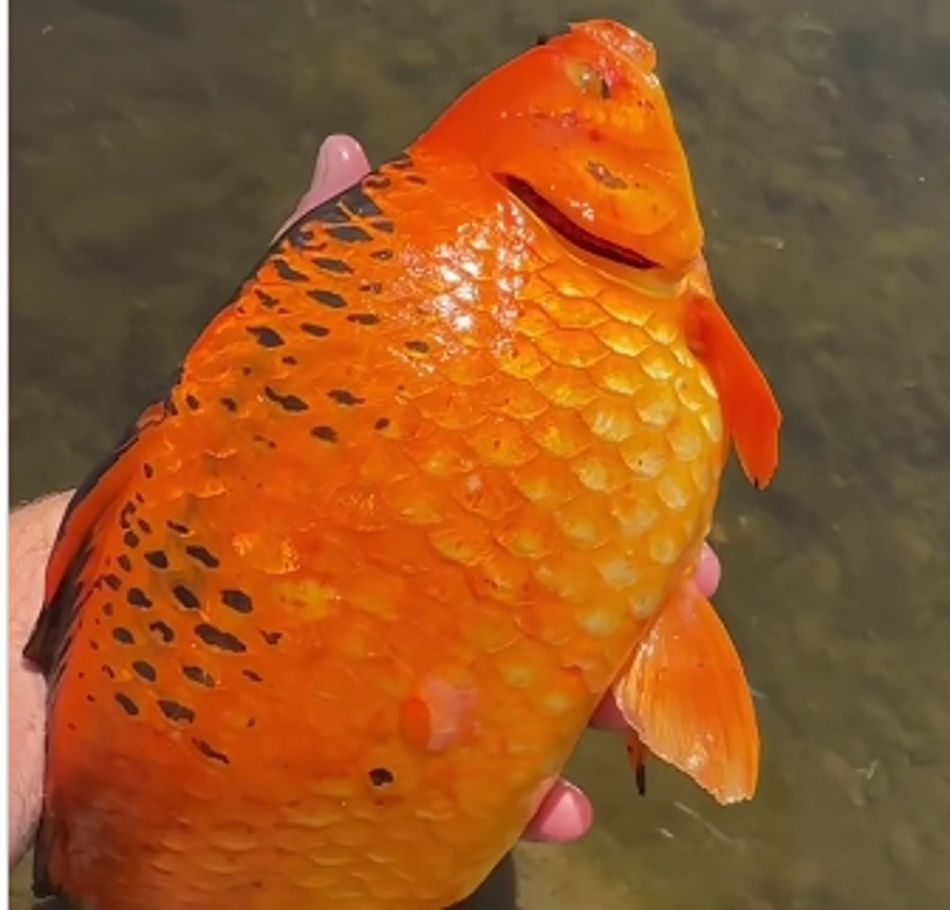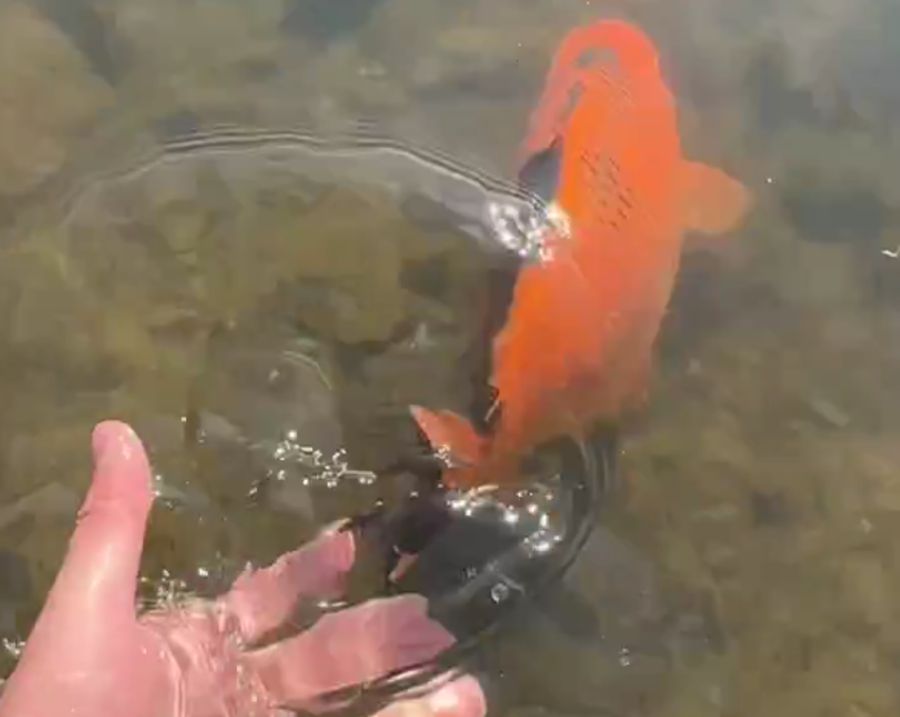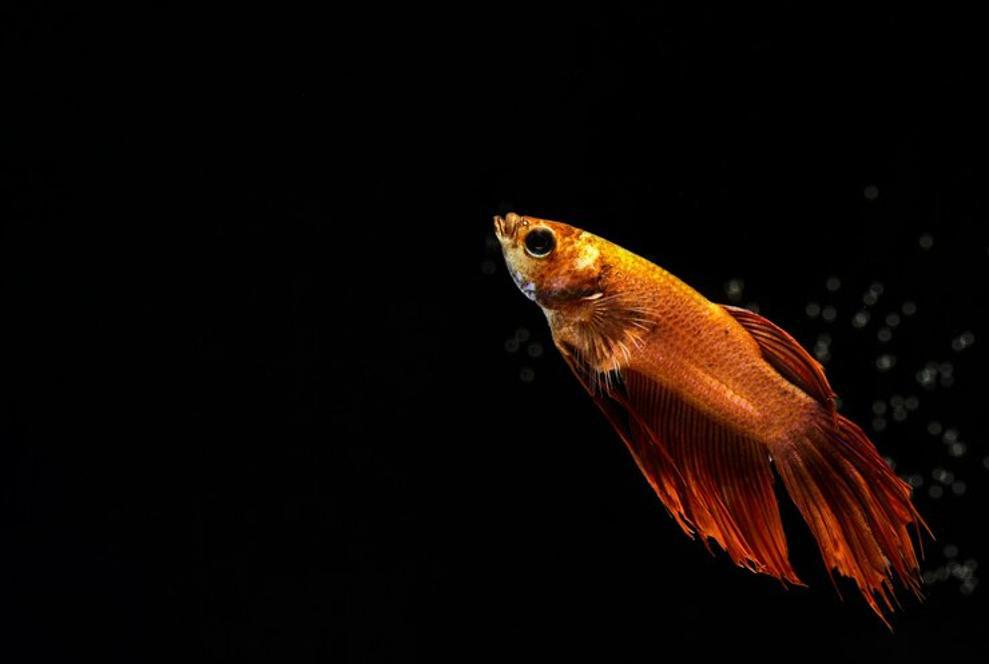Across the United States, an unusual phenomenon has been occurring for the past several years. Enormous goldfish, measuring more than a foot long, have become common in freshwater lakes across the nation.
Experts have concluded that careless pet owners are to blame for the unusual sightings. Scientists claim there could be millions of them in the Great Lakes.
Goldfish Wreak Haovc in the Wild

The common goldfish, a species native to Asia, has been a popular pet in the Western world for over a century.
Typically considered a passive fish, they are anything but when released into the wild. According to the New York Times, the golden pet has been wreaking havoc on the Great Lakes.
The Problem With Wild Goldfish

An average pet goldfish won’t grow any larger than a few inches when kept in the home. However, in the wild, they can grow to a monstrous size of up to 16 inches long.
When goldfish are removed from a flake-based diet and break free from their small bowls, they resemble bright orange footballs, according to those who’ve spotted them in the Great Lakes regions.
Fisher Nearly Falls Overboard

One fisherman, Mike Loughran, went viral on Instagram after sharing a short video of one of the monstrous goldfish he found.
Known as @Fishermanmike on his Instagram page, he told interviewers he nearly fell overboard the first time he laid eyes on the colossal creature in Lake Erie.
Mike Explains the Dramatic Size Difference

The local fisherman explains why he was so shocked to see so many of these enormous goldfish in and around the Great Lakes.
“It’s just crazy to see something that, growing up, you go to the fair, and you get a little goldfish in a bag. All of a sudden, you’re seeing one 14, 15 inches long,” said Loughran.
Not All Fun and Games

While the mega goldfish is certainly a sight to behold, they are harmful to the local ecosystems and can cause severe problems to the native marine wildlife.
The feral fish root up and eat native species of plants and algae, which, when consumed, force them to expel nutrients that aid the growth of harmful algal blooms, explained Christine Boston, an aquatic research biologist.
Mega Goldfish Eat Everything in Their Path

The goldfish are at an advantage, claimed Bloom, who said they can “eat anything and everything,” yet not many species of the Great Lakes can enjoy them as a meal.
“A fish would have to have a really big mouth to eat it,” Bloom told a reporter from the Times.
Careless Owners Lead to Influx of Giant Goldfish

According to Dr. Prosanta Chakrabarty, a professor in the Department of Biological Sciences at Louisiana State University, giant goldfish result from careless owners releasing them into the wild.
“They are just people’s pets that have been washed out or people released into their local lakes and rivers, and they keep growing as long as they have food,” said the professor.
Mega Goldfish Take Over the Great Lakes

Now that the goldfish have had plenty of time to reproduce, the best estimates claim that millions of giant species could be roaming in the Great Lakes.
“There are literally millions of goldfish in the Great Lakes if not tens of millions,” Nicholas Mandrak, a biology professor at the University of Toronto Scarborough, told The Times.
Goldfish Aren’t Phased by Climate Change

While climate change seems to affect every living thing on the planet, according to experts, the goldfish have the upper hand in this situation.
The giant fish can adapt to the rising temperature of the sea and waters with lower oxygen levels, meaning they will continue to multiply with ease.
How to Rid the Lakes of the Goldfish

Boston, who has been tracking the giant goldfish in Lake Ontario for several years now, recently published a paper on her findings.
The biologist details the best time to remove the invasive species, saying, “We found out where they are before they start spawning. That’s a good opportunity to get rid of them.”
Safely Removing the Giant Fish

Boston and her colleagues have already begun working on ways to safely remove the enormous goldfish without hurting any native wildlife. One way would be to use an electrical current to stun and remove them.
Michigan State University also offered some advice to people, claiming that they can help prevent the spread of this invasive species by refraining from releasing their pet goldfish into the wild.
